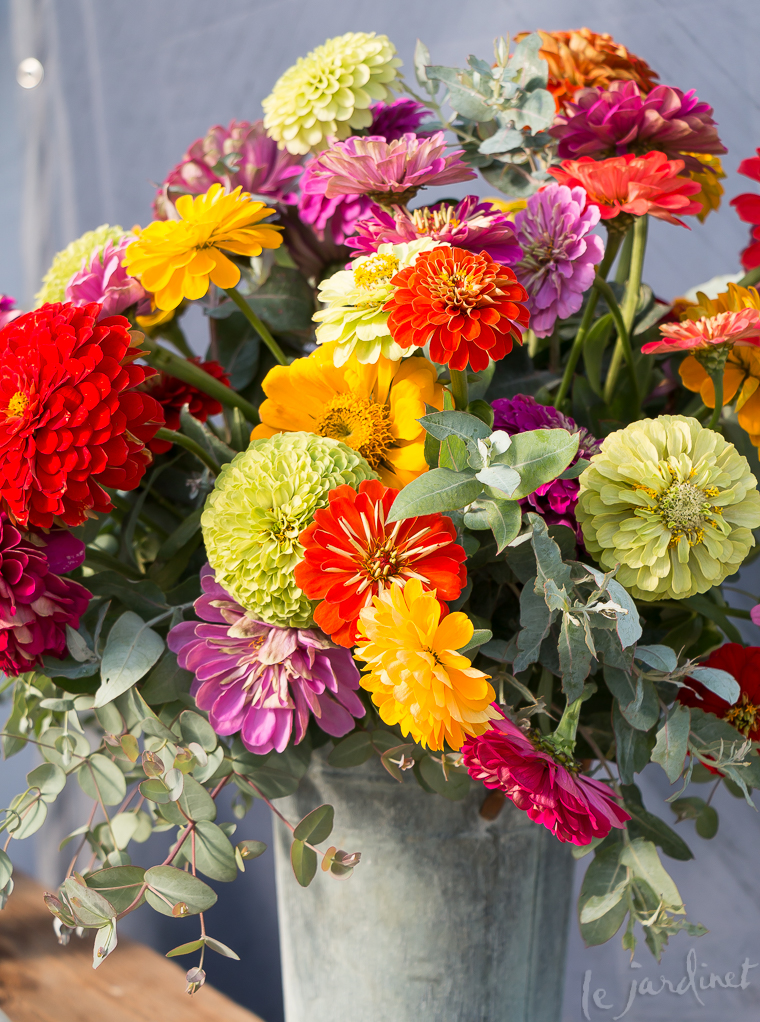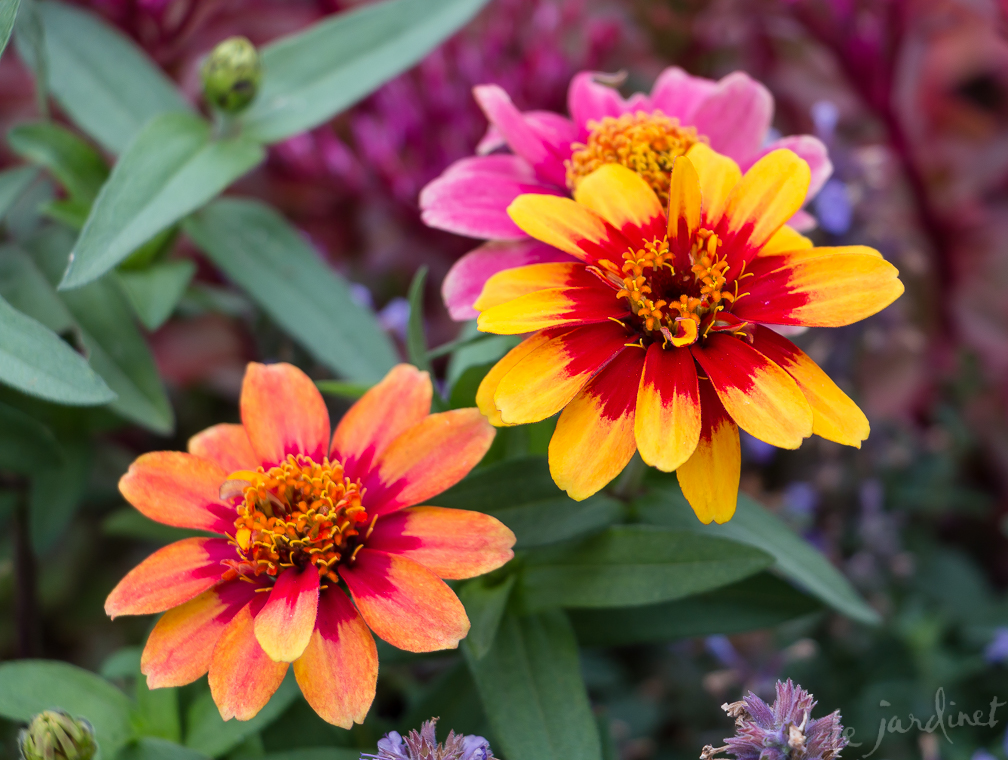Zinnias: how to grow and use them

It's not too late to grow zinnias from seed! Which is just as well because I goofed. Let me explain.
Zinnias hate cold, wet weather almost as much as I do. In the Seattle area we need to wait until night temperatures are stable at 55'f or above before planting out – which is typically June 1st. (This is at least two weeks later than less fickle annuals such as geraniums as they are happy with night temperatures of just 50'f). Zinnias (and basil) need to wait that little bit longer. For that reason, when we grow zinnias from seed we should be starting them around the end of March, although personally, I like to set out larger plants and so start them early March.
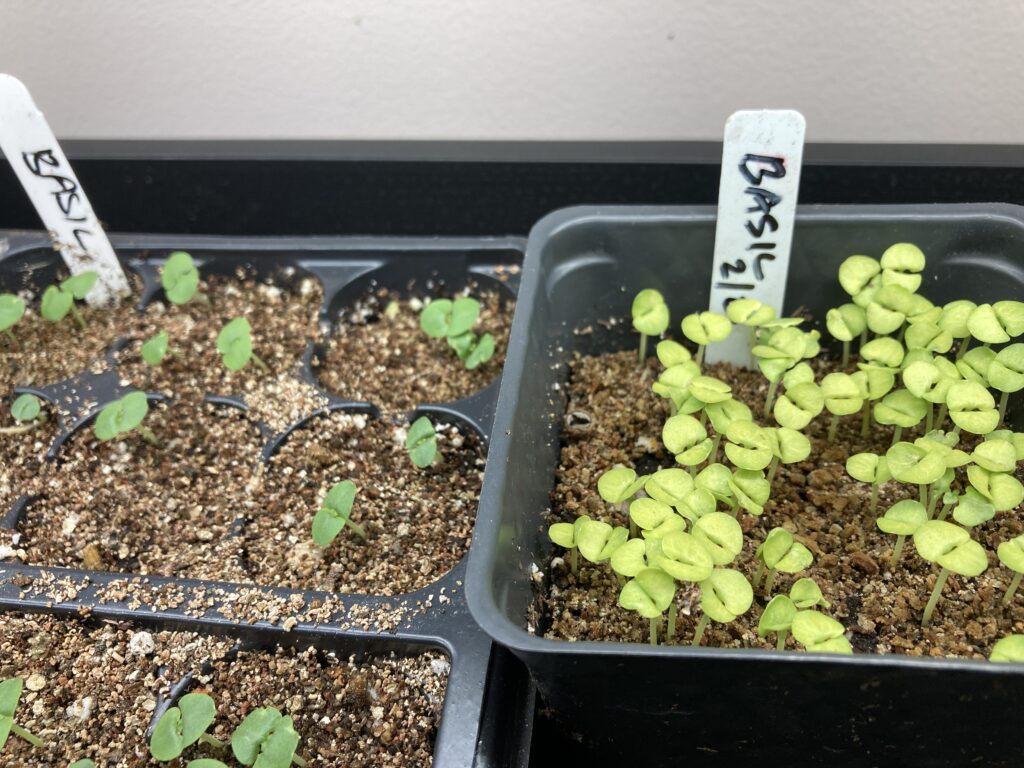
Basil: the pale yellow seedlings on the right were sown on 2/25 in contaminated potting soil. Those on the left were sown 3/18 in sterile soil
But like I said, I goofed: I used old potting compost. It had been kept in the greenhouse all winter but it was an opened bag. Since my greenhouse is not weather tight, the soil had doubtless been subject to overheating, condensation, and freeze-thaw cycles. The seeds I sowed in it all germinated quickly, assuring me of the seed viability. But then they just didn't grow at all! Slowly they turned yellow and began to show evidence of some fungal disease. Ugh. (I always wash the seed trays in hot soapy water with some bleach added so knew that wasn't the issue).
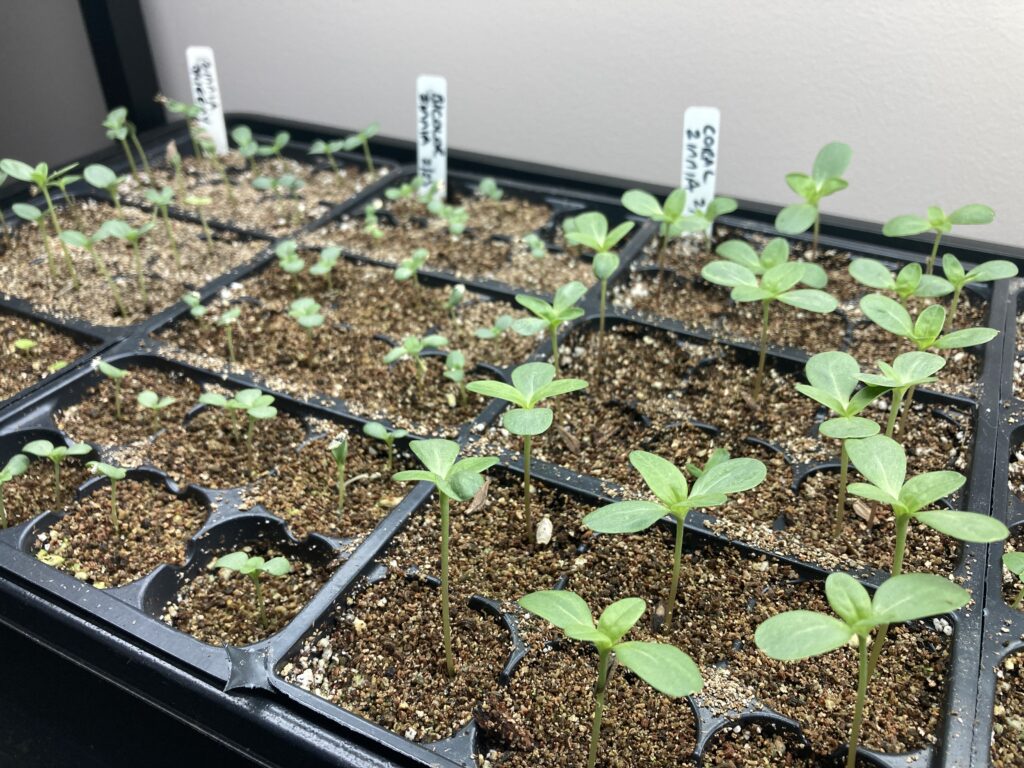
Sown on 3/18 (I reused the old tags) these three zinnia varieties will still reach a good size for setting out in the garden on June 1st
So I quickly sowed a second batch in fresh, new compost and they are doing nicely. Lesson learned.
Why Grow from Seed?
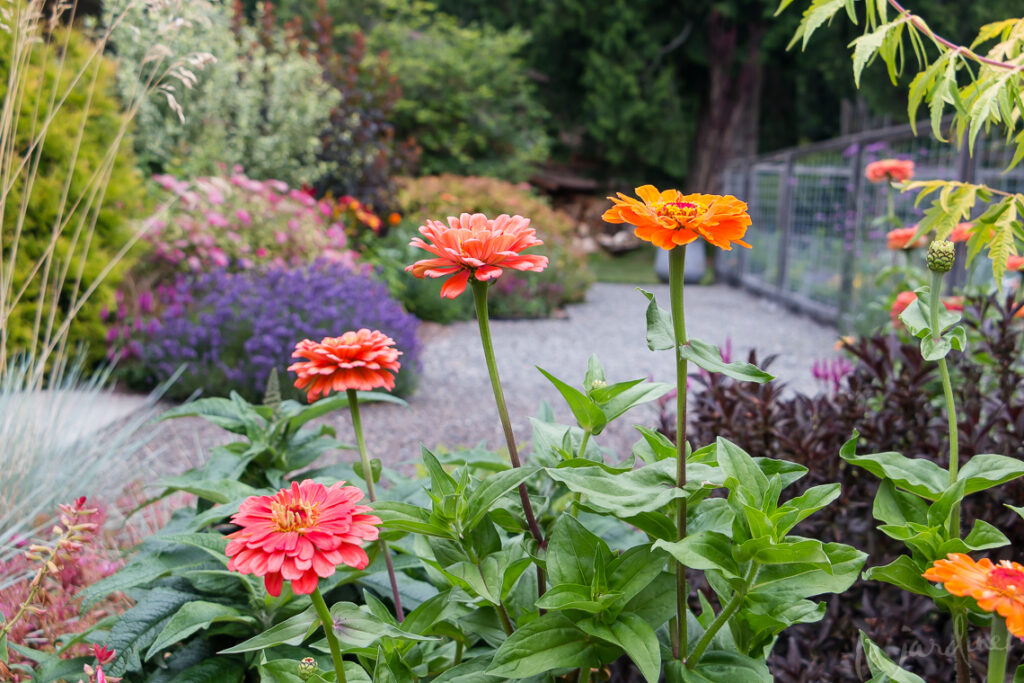
Apricot Blush from Renee's Garden is a pretty color blend that works well with lavender, blue and white. They are also featured in the lead image for this blog post.
Certainly you can buy zinnia starts at good nurseries but the varieties offered are usually limited to a psychedelic color mix of the Profusion series. If you favor that wild color blend that's great, but I prefer to select specific colors or shades – and the heights of the zinnia that I grow. By growing from seed I have far more options to choose from – and they are so easy to grow, even a child can be successful – assuming they use sterile soil to start with!
PS Zinnia are reliably deer-resistant and manage with minimal supplemental water in my moisture retentive soil once roots are established.
Zinnia Selection
Before you purchase seeds, think about what you want from your zinnia. Are they going to be primarily a cut flower? Then go for one of the taller varieties – Benary's Giants are my favorite but there are many others. Would you like to add some to containers or edge a pathway? Then the shorter, bedding type would work best.
In the Garden
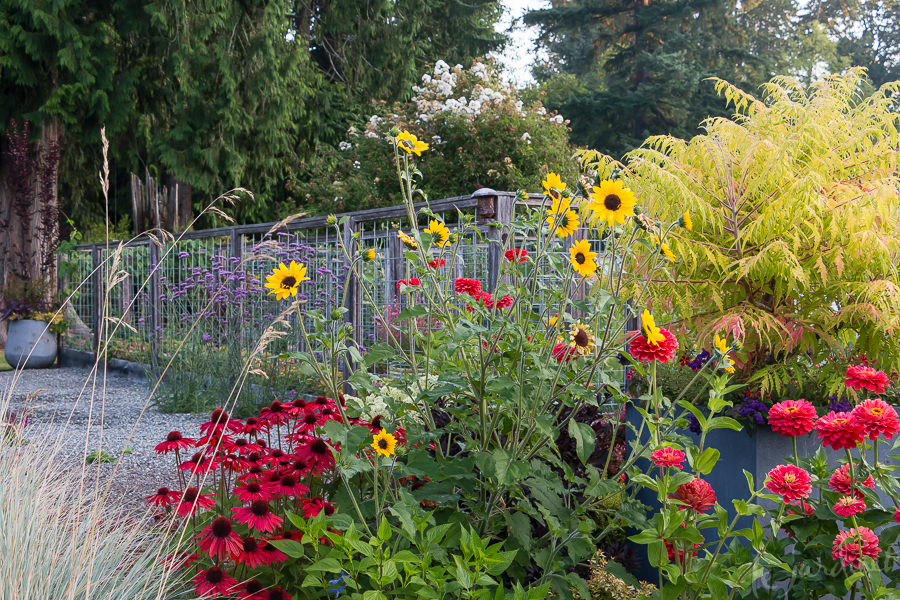
I prefer to intermingle my zinnia with other perennials and annuals rather than have a dedicated cutting garden
If you primarily want these for cutting you may prefer to mass plant zinnia in one dedicated area to make watering easier. Tall varieties need some sort of support, so if growing as a block you could add strong bamboo canes at each end and use garden twine to create an enclosure. If, like me you prefer to integrate zinnias into your mixed borders you may need to add a bamboo cane adjacent to each plant and tie it in as it grows.
Plant Companions
This is where I have so much fun: choosing colors and textures of companion plants to really make the zinnias shine. Here are a few examples from previous years in my garden plus some ideas I'm playing with for this year.
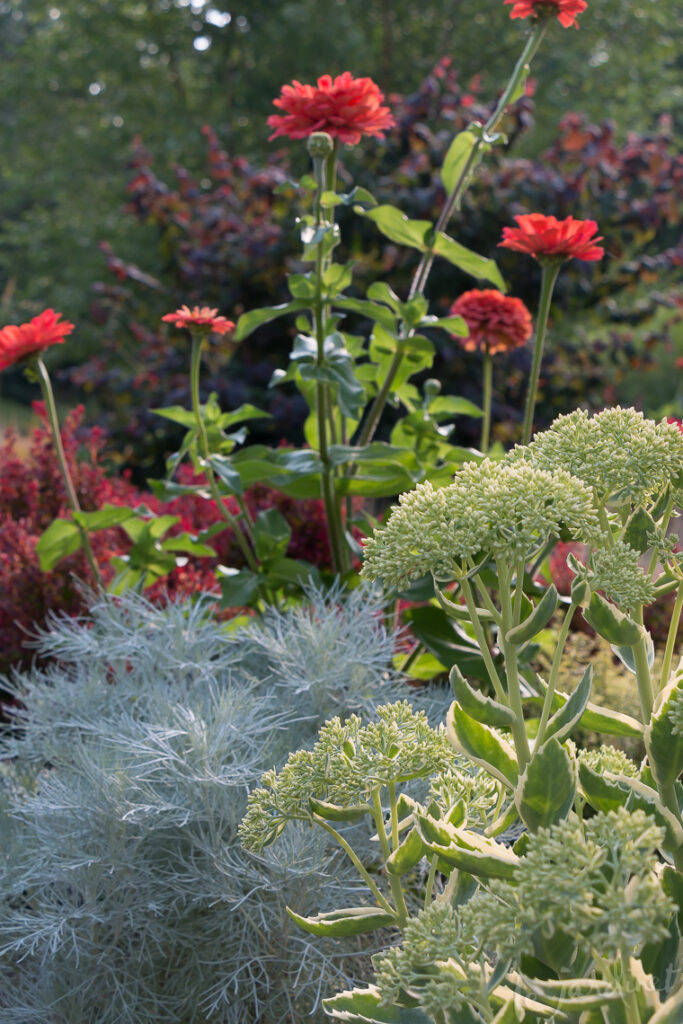
Makana Silver artemisia, Elsie's Gold sedum and Benary's Giant Coral zinnia were a refreshing combination
Coral, silver and cream was a gentle-on-the-eye combination in 2018.
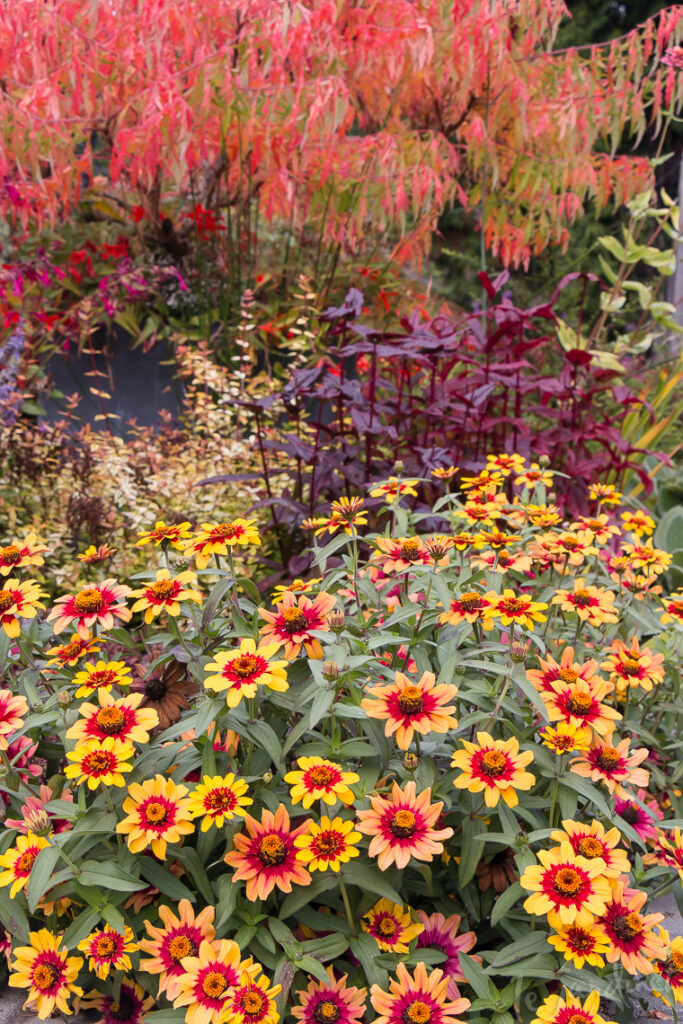
Tiger Eyes sumac (in a container), Kaleidoscope abelia, Midnight Masquerade penstemon and Red and Yellow Bicolor Profusion zinnia; 2021
If you fancy something brash and bold then the fiery shades above may be more your style. These zinnias change color as they fade – from gold, to orange then hot pink, all with a darker eye.
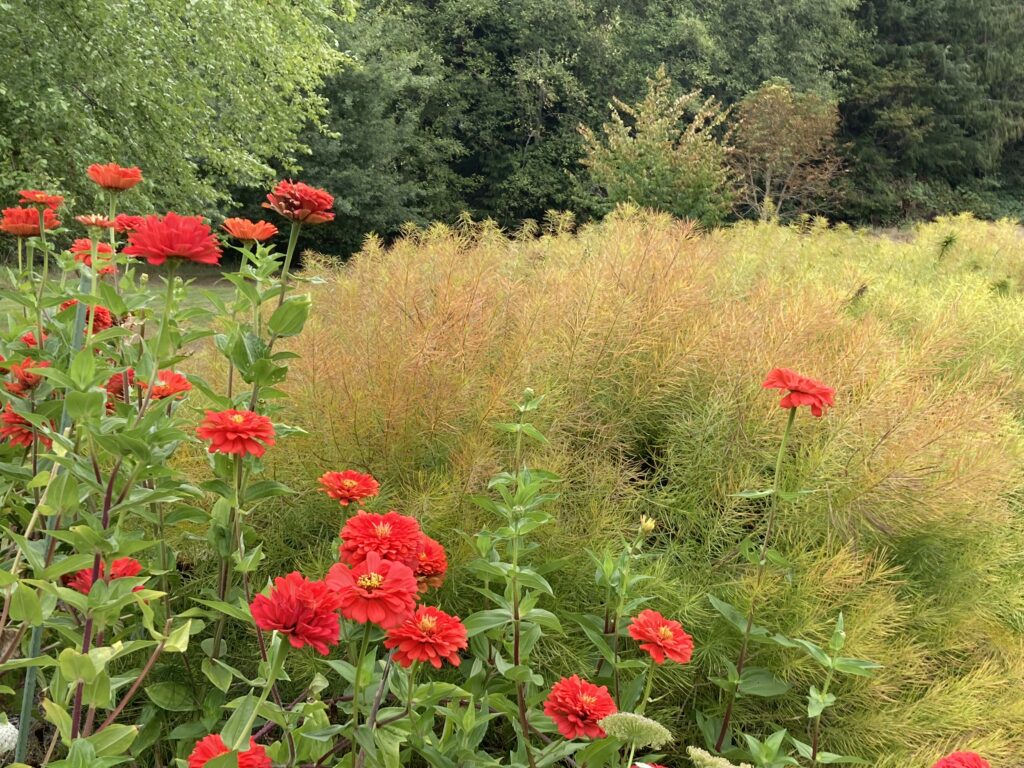
Late September 2023: Benary's Giant Coral zinnia against Amsonia hubrichtii
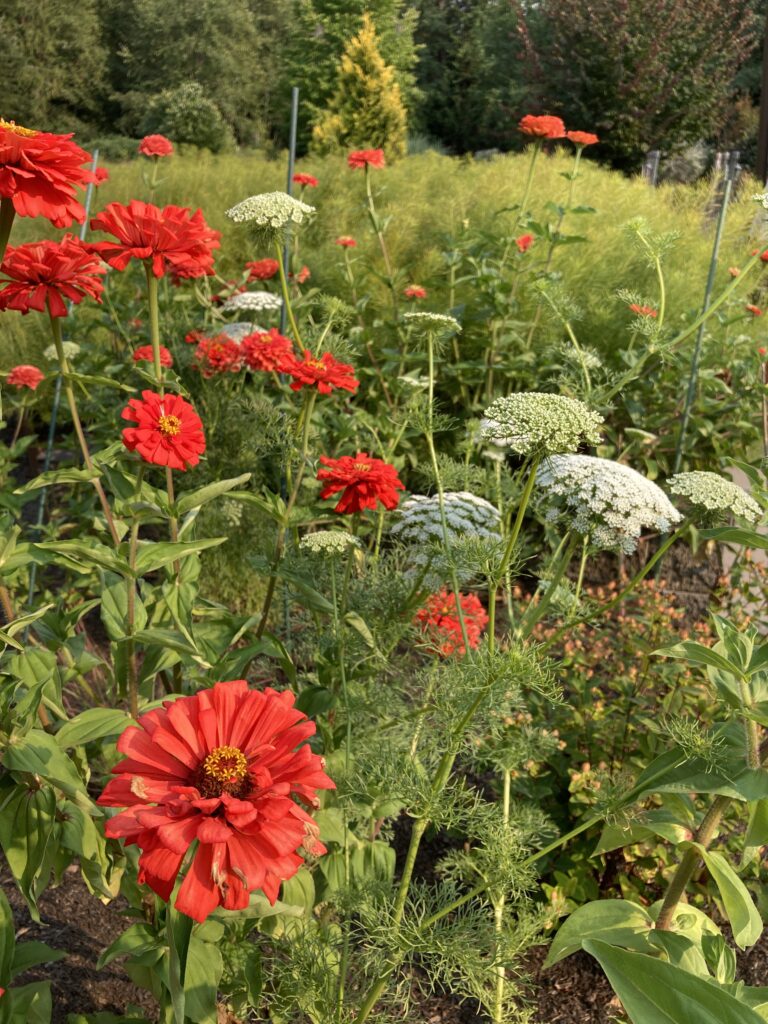
Inspired by Great Dixter, I also grew Ammi majus from seed last year to intermingle with the zinnia. They took forever to bloom but the effect was worth waiting for.
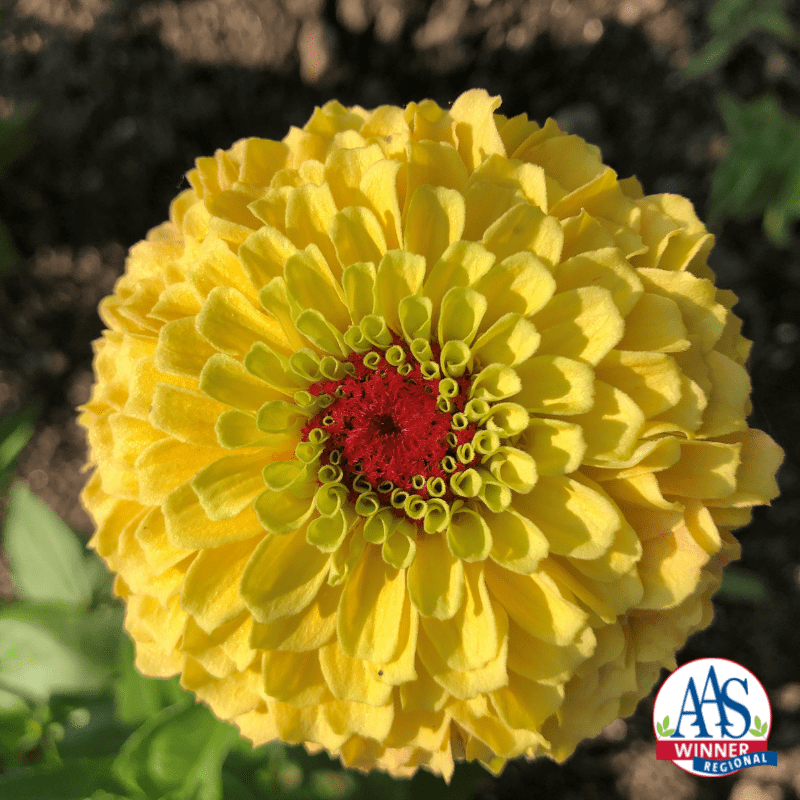
Zinnia Queeny Lemon-Peach is a new one for me this year. The color appears to fade to a muted yellow-green.
I'm trying a new one this year: Queeny Lemon-Peach. This is a mid-height at 1.5-2 feet tall but looks to have good stems for cutting with flowers being 2-4" across. I can see this with blue catmint (Nepeta spp.) and perhaps a low growing silver wormwood (Artemisia) but may also try it near something with dark red foliage. What would you combine it with? Give me some ideas!!
Seed Suppliers & More
Floret Flowers is a cut flower grower in Skagit County. It was her blog post on growing zinnias that encouraged me to expand on that and share these ideas with you. She also offers seed for sale, online workshops and her book is breathtakingly beautiful.
All America Selection Check out their award-winning selection of zinnias that underwent extensive trailing and judging.
I have also purchased zinnia seeds from Renee's Garden, Harris, Johnnys , Eden Brothers
Which varieties are you growing this year?
Subscribe to Receive Blog Posts
Gardening inspiration delivered right to your inbox from Le Jardinet
